Tricia Kelly
Ócar
A Material Older Than the Island – exploring how sixty million years of volcanic fire, weather, and transformation created the red ochre that now colours Tricia’s life and work.
Tricia Kelly’s practice originates on the north Antrim hills, with sweeping views of the valleys where the land folds into layers of basalt and red earth. Her family roots stretch across Donegal and Derry, and it was through those landscapes – and their stories – that she first began to understand how deeply the earth shapes identity.
“My husband’s family are from Glenshesk, at the foot of Knocklayd Mountain” she says. “That’s really where a lot of this story begins. It’s iron-ore country – the kind of place where the land has always been known for its colour.”
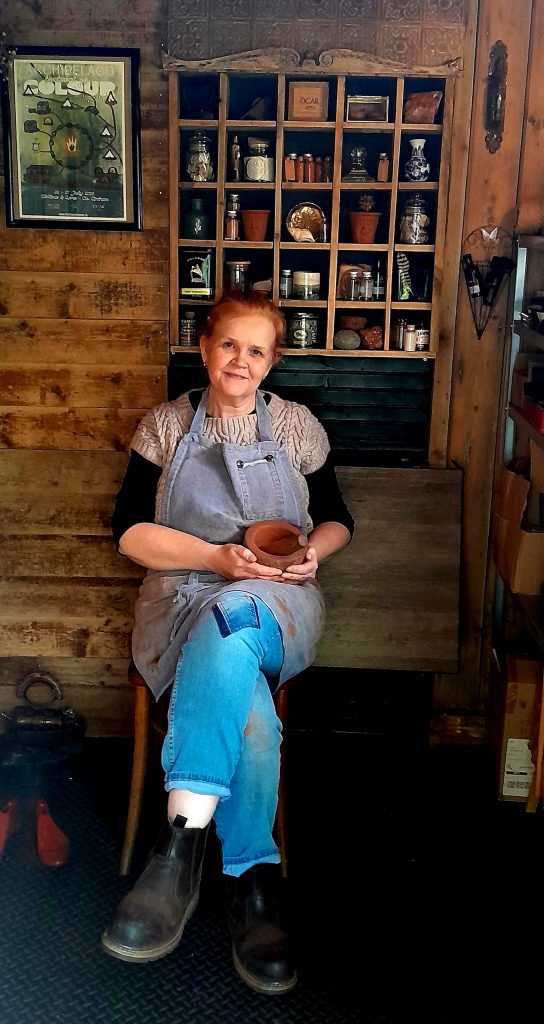
From Art History to Ochre Fields
Kelly studied History of Art at Trinity College Dublin, where red ochre was something she knew only through textbooks. “In art history, you see it everywhere,” she explains. “It appears at every milestone – from cave paintings to the Book of Kells, to the Mona Lisa. It’s one of the oldest materials in human creativity.”
At the time, her curiosity was academic. “I knew it as an iron-oxide pigment – something artists used – but I had no idea there was a huge deposit of it right under our feet here in the north. That discovery changed everything.”
After university, she worked in literacy and community education. “I volunteered in Dublin, thinking I’d be doing art projects with kids, but it turned out to be reading and writing support. That became my career for decades,” she says. “But five years ago, I left work to take on caring responsibilities. Anyone who’s a carer knows you need something for yourself – something to put back into your reserves. ”It was during that period of caring that she returned to pigments. “I started with natural dyes – plants, bark, berries – doing kitchen experiments,” she laughs. “Beautiful colours, but they faded. I wanted something more permanent. When I found red ochre, I realised I’d found what was missing.”
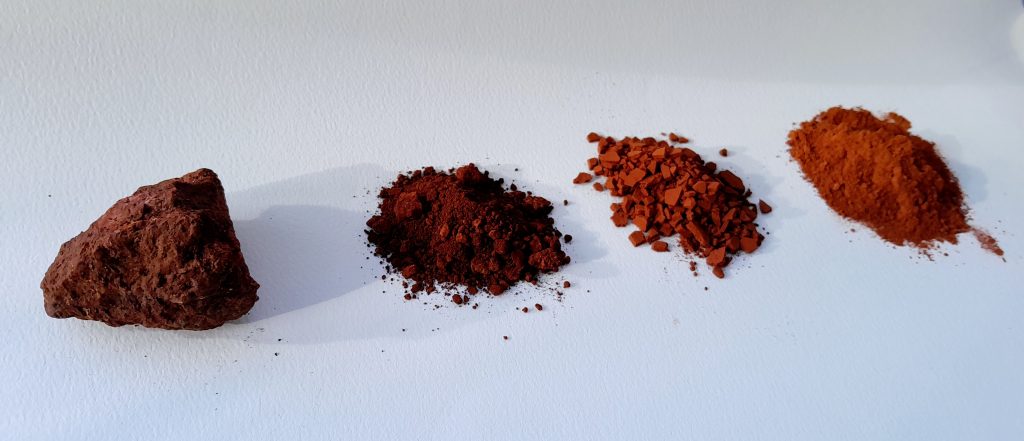
A Deep Time Material
As she began to study it, Kelly realised that the ochre beneath Antrim had its origins sixty million years ago – long before Ireland, or even humans, existed. “When this ochre began to form, our bit of the earth’s crust was still near the equator, attached to what are now the Appalachian Mountains,” she says. “Volcanic eruptions covered the land with lava that cooled into basalt. Over millions of years, that basalt weathered and transformed into iron oxide – the red ochre we find today.”
She uses a metaphor to explain the timescale. “If you imagine the age of this ochre as a single day, Ireland as we know it doesn’t appear until half a minute to midnight – and the first people only arrive twenty seconds before. We’ve only been using ochre for a few seconds of that day.”
For Kelly, that sense of deep time is grounding. “It’s like looking at the stars,” she says. “You feel small, but also connected – to the land, to every person who’s ever used this material.”
Gathering the Pigment
Antrim’s red ochre lies between layers of basalt, sometimes hundreds of metres underground. “Most people don’t realise it’s there,” Kelly says. “You can see it at the Giant’s Causeway – there’s a red band that runs through the cliffs above the stones. But everyone’s looking at the hexagons – they miss the colour.”
To locate ochre, Kelly follows 19th-century geological maps created by surveyors on foot and bicycle. “They mapped every resource – iron, aluminium and more. Those maps show where to look.” She often visits basalt quarries where the ochre layer has been exposed. “For the quarry, it’s waste material – too soft to use. For me, it’s treasure. They let me pick through the red and yellow stones, and I take only what I can process.”
Her process is painstaking. “I crush it by hand, sieve it, wash it, and let the heavy sediment sink. The lighter material floats – that’s what becomes pigment. After drying and grinding through finer sieves, I get it down to about thirty microns, half the width of a human hair. About five kilos of rock gives one kilo of pigment.”
Even the discarded sediment is returned to the land. “I take it back to the quarry. It’s already sixty million years old – it deserves respect. Eventually, it’ll weather into ochre again.”

The Pull of the Colour Red
While ochre comes in shades of yellow, brown, and orange, it’s red that holds Kelly’s fascination. “There’s something in our psychology that responds to it,” she says. “At workshops, people will come over just to touch it. They say, ‘I want to eat it.’ It’s like there’s a memory in us – something ancient.”
That primal connection, she believes, has always been part of human life. “People have used red ochre in rituals, in burials, in healing. Bones laid on beds of red earth. And even up to the 18th century, people took it as medicine – red or green powders for stomach ulcers or indigestion. Ireland has always believed in the curative power of earth.”
Her own family stories tie into that lineage. “My mother’s people, the O’Friels, were the only ones allowed to lift Gartan clay – a white clay from Donegal said to protect against fire and harm. And St. Colmcille himself was said to have thrown red earth into the sea to calm a storm on his way to Iona. That sense of the land as alive, as healing, is deep in us.”
From Myth to Modern Practice
Kelly’s research into folklore and place names has revealed how much of Ireland’s mythology reflects the red beneath the soil.
“We’ve forgotten how much our ancestors knew,” she says. “Lugaid Riabh nDearg – the Red Striped; Medbh Lethdearg – the Red Side; the Fir Dearg – the Red Men. Even the Red Hand of Ulster. We’ve always assumed it’s about battle or blood, but maybe it’s just the land itself. Maybe we were artists before we were warriors.”
That sense of continuity shapes her outlook. “It’s not about nationalism or ownership,” she says. “When this ochre formed, there was no Ireland – no humans. It’s something that connects everyone. Everywhere in the world where people had access to red earth, they used it – Australia, South Africa, Spain, France. It’s universal.”
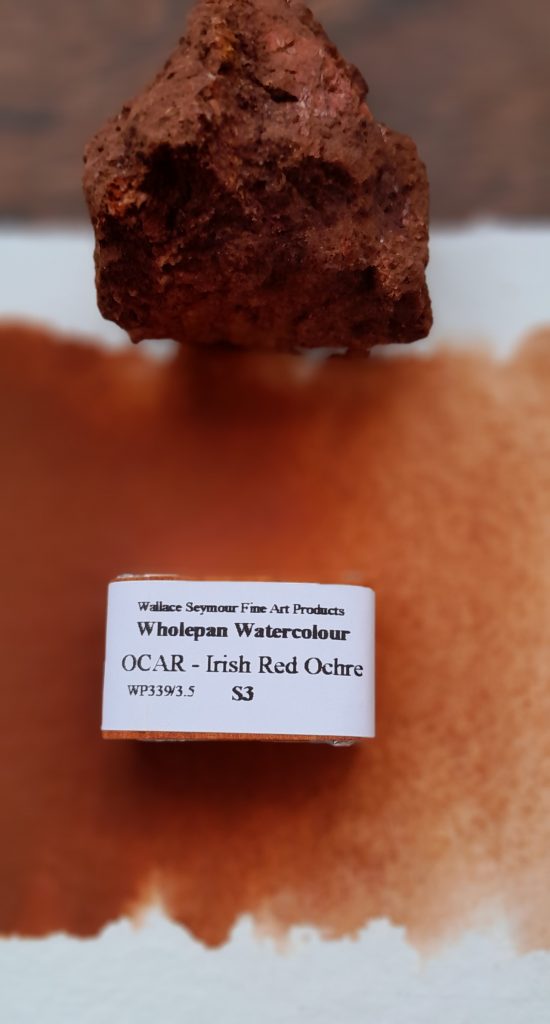
The Science of Earth Colour
Kelly’s work has now extended into global collaborations. “I’ve sent samples to Japan for analysis by the Society for the Study of Natural Pigments. They’re experimenting with grinding natural pigments to submicron scale using nanotechnology – so fine that a sugar cube of pigment could cover a tennis court. The idea is sustainability – making natural pigments go further and enabling new applications for red ochre”
She also collaborates with Wallace Seymour, an independent artisan paintmaker in Yorkshire. “I send them the processed powder, and they make it into professional oils and watercolours. They’re sold all over the world now – from New York to Donegal. The feedback from artists has been amazing,portrait painters love the warmth of Ócar oil paint for underpainting, and the watercolourists love the granulation.”
Kelly describes her own process with humility. “There are about seventeen steps – from rock to pigment. I’m just one person working by hand, but I’ve refined it as much as I can. I’m always learning.”

A Colour That Connects
More than a material, ochre has become a philosophy for Kelly – a way to connect art, science, history, and healing. “It’s a universal material,” she says. “It reminds us of where we come from. If you think of geological time as a 24-hour day, humans have been using it for seconds. But in that short time, we’ve used it to decorate, to bury, to heal, to express.”
Her work with artists and scientists worldwide has only deepened that sense of wonder. “Maybe that’s why we’re drawn to it,” she says. “It’s survived fire, ice, and time itself. It’s the colour of resilience – the colour that endures.”
Support Go Leor. Get the Print. Join the Story.
Go Leor is an independent Irish arts magazine built by hand, heart, and community. Your support keeps meaningful storytelling alive – in print, in culture, and in conversation. Through Patreon, you can join as a monthly supporter and receive exclusive benefits across our tiered memberships:
Fir Bolg: Your name printed inside every issue.
Muintir Neimhidh: Your name + monthly issue delivered (UK & Ireland) and PDF issues.
Muintir Partholóin: All previous benefits + monthly editor’s dispatch.
Bradán Feasa: All benefits + help shape future articles and themes.
Your backing helps us print, publish, and grow a space for creative voices across Ireland and beyond.
The Latest Articles

Bob Speers and the Quiet Magic of Ireland’s Bogs
In a room filled with timber, peat, and light, artworks hung on walls are more like fragments of the land itself – weathered, breathing, and alive with memory.
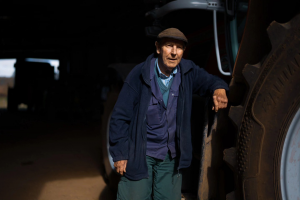
Hernan Farias on Light, Connection and Creative Growth
From the Classroom to the Camera – charting his shift from teaching English in Chile to full-time photography in Northern Ireland.
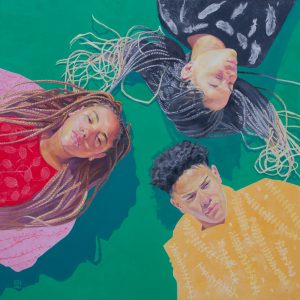
Faith and Colour: The Genuine Art of Beverley Healy
In her imaginative work, paint becomes prayer – a meditation on trust, surrender, and creation, where colour and stillness meet to form something transcendent.

Ruairi Mooney on Creativity, Practice & the Search for Authentic Art
From the North Coast to the Canvas: a journey of resilience, daily practice, and the slow discovery of an authentic artistic voice.

From Trauma Wards to Ceramics: Denise McAuley’s Authentic Creative Journey
From the trauma wards of the Royal to the shoreline of Cushendall, Denise creates small-batch ceramics that carry memory, resilience, & the rhythms of the sea.
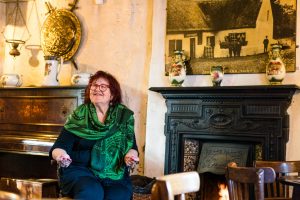
Liz Weir on Irish Storytelling and a Lifetime of Tales
From Belfast libraries to Guinness World Records and global awards – Liz shows how stories, shared with care, can enchant, connect, and heal across cultures, ages, and unexpected places.
